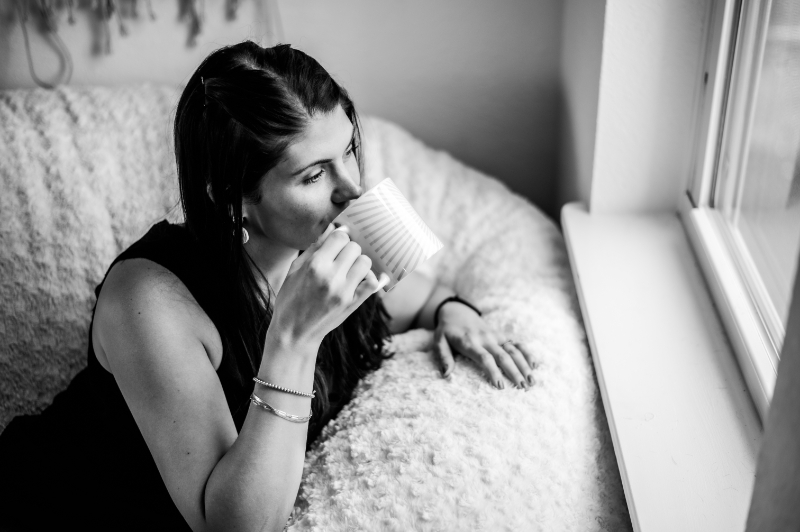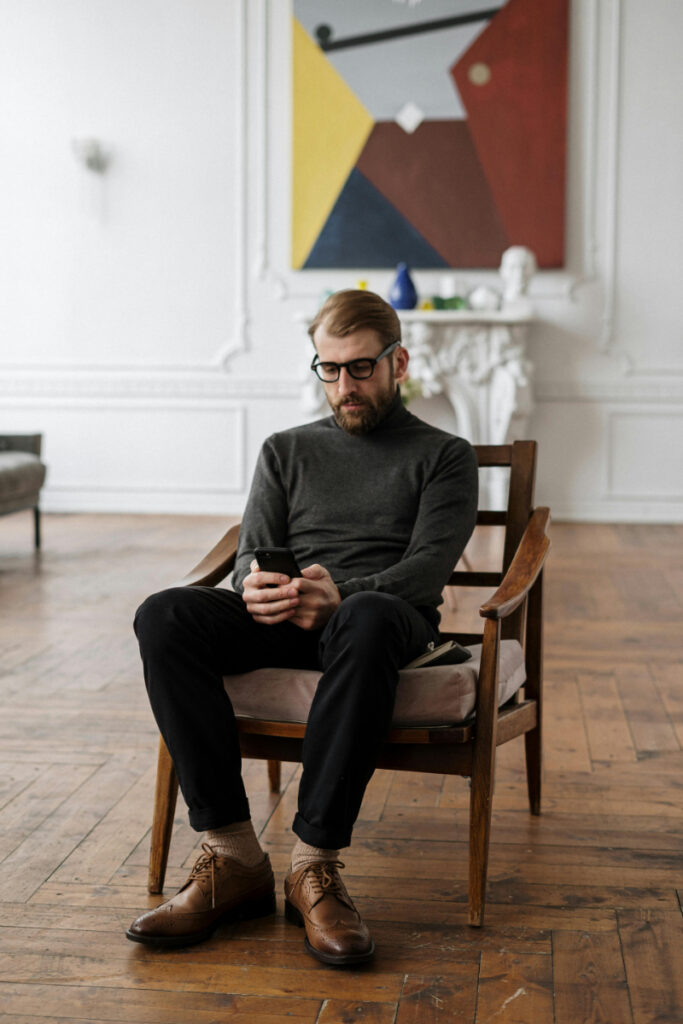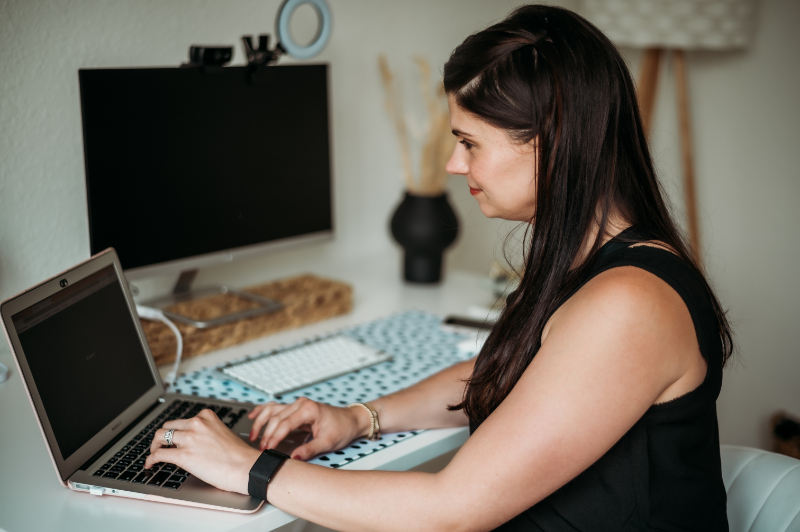Tech Addiction or Anxiety Trigger? Understanding How Technology Affects Mental Health
January 28, 2025
Technology has become a constant presence in our lives. From smartphones to social media to 24/7 work emails, it’s hard to imagine a day without it. While technology has its benefits, it can also contribute to anxiety and mental health challenges. As a licensed professional counselor (and someone who loves a good digital detox), I’ve seen firsthand how technology affects mental health—both positively and negatively.
Let’s break it down and find ways to create a healthier relationship with our screens.
THE LINK BETWEEN TECHNOLOGY AND ANXIETY
To understand how technology affects mental health, it’s important to recognize the constant stimulation it creates and the impact it has on our emotional well-being. Have you ever noticed how spending too much time on your phone can leave you feeling anxious, drained, or even overwhelmed? There’s a reason for that. Constant exposure to technology overstimulates the brain, making it harder to focus, relax, or connect with the present moment.
Studies have shown that excessive screen time, particularly on social media, can amplify anxiety by triggering feelings of comparison, FOMO (fear of missing out), and information overload. According to this study, prolonged screen exposure can disrupt sleep, increase stress levels, and contribute to symptoms of anxiety and depression.
For individuals with OCD or anxiety disorders, technology can be a double-edged sword. It might provide a distraction or source of information, but it can also feed compulsions (like Googling symptoms) or create constant loops of reassurance-seeking. (Sound familiar? You’re not alone!)

SIGNS TECHNOLOGY MIGHT BE AN ANXIETY TRIGGER
If you’re wondering how technology affects mental health, here are some signs to look for:
- Feeling restless or anxious when you’re away from your phone.
- Compulsively checking emails, texts, or social media, even when you don’t need to.
- Difficulty sleeping because you’re scrolling late at night.
- Noticing a mood drop after spending time online (especially on social media).
- Struggling to focus on tasks without being interrupted by notifications.
If any of these resonate with you, it’s a good opportunity to pause and reflect on your relationship with technology. Ask yourself: How is this serving me? Is it helping or harming my mental health? The goal isn’t to disconnect completely—after all, technology is a part of daily life—but to establish boundaries that help you feel more in control and less reactive.
By addressing these signs and making small changes, you can regain balance and reduce the mental strain caused by excessive screen use.
FINDING A HEALTHY BALANCE
When it comes to managing how technology affects mental health, the key is balance. Technology isn’t going anywhere, but how we interact with it can have a huge impact on our well-being. By making intentional choices about when and how we use it, we can reduce mental overload and create a healthier relationship with our devices. Here are some strategies to help:
1. Set “No-Tech” Zones
Designate specific areas or times where technology is off-limits. Common examples include the dining table (so meals can be focused on connection rather than screens), the bedroom (to protect your sleep quality), and family time (so you can be fully present). By carving out these “no-tech” spaces, you give your brain a chance to rest and recharge, free from the constant stimuli of screens.
If a full “no-tech” zone feels overwhelming, start small. For instance, you could commit to keeping your phone in a drawer during dinner or leaving it in another room for 30 minutes before bedtime. These little habits can add up to significant mental relief over time.
2. Schedule Social Media Use
Social media is one of the biggest culprits when it comes to feeling overwhelmed by technology. (Raise your hand if you’ve ever fallen into the scroll hole and looked up an hour later wondering where the time went!) Instead of checking your feeds throughout the day, try setting specific times for social media use.
For example, you might give yourself 15 minutes in the morning and 15 minutes in the evening. Use a timer if you need to keep yourself accountable. Scheduling your social media time helps you engage more intentionally and prevents it from becoming a mindless, time-consuming habit. Plus, you’ll likely find that by limiting your time online, you’ll start to feel less drained and more present in your offline life.
3. Use “Do Not Disturb” Mode
Our phones are designed to grab our attention—constantly. Notifications, pings, and alerts are like little interruptions that add up over the course of the day, creating stress and distraction. That’s where your phone’s “Do Not Disturb” or “Focus” settings come in handy.
By turning off non-essential notifications (or setting them to “silent” during specific times), you can create pockets of calm where you’re not constantly reacting to every buzz or ping. Start with just an hour or two each day and notice how much more focused and relaxed you feel. This is especially useful during work hours or family time, when being present is most important.
4. Limit Multitasking
In today’s world, multitasking feels like a badge of honor—but it’s actually a recipe for mental overload. Trying to juggle work emails, scrolling social media, and managing household tasks all at once can leave your brain scattered and stressed.
Instead, focus on one task at a time. For example, if you’re responding to work emails, put your phone in another room so you’re not tempted to check it. If you’re playing with your kids, resist the urge to multitask by scrolling through Instagram at the same time. Single-tasking not only reduces stress but also helps you feel more accomplished at the end of the day.

LEVERAGING TECHNOLOGY FOR MENTAL HEALTH
Technology isn’t all bad—it’s about how we use it! While there are concerns about how technology affects mental health, it can also be a tool for recovery if used intentionally. Here are ways to make your devices work for you, not against you, when it comes to mental health.
- Use Apps for Mindfulness and Stress Management: Apps like Calm, Headspace, and Insight Timer can guide you through meditation, breathing exercises, and relaxation techniques. (I’ve recommended these to so many clients!)
- Find Supportive Communities Online: There are incredible online communities and forums for people navigating OCD and anxiety. Just be mindful to avoid spaces that might trigger reassurance-seeking or negativity.
- Listen to Mental Health Podcasts: Podcasts are a fantastic way to learn tools and strategies for managing anxiety and OCD. (Shameless plug: Check out my podcast, All the Hard Things, where I share actionable tips for recovery. You can find it here.)
- Track Your Progress: Use technology to track your mental health journey. Apps like Moodpath or Bearable can help you monitor patterns in your mood, anxiety levels, and triggers over time.
By using technology intentionally, you can harness its benefits without falling into the pitfalls of overuse.
FINAL THOUGHTS ON HOW TECHNOLOGY AFFECTS MENTAL HEALTH
Technology is a part of our daily lives, but that doesn’t mean it has to control us. By understanding how technology affects mental health, you can take steps to create healthier habits and reduce its negative impact. Start by identifying your own triggers, setting boundaries, and using technology as a tool for support—not stress.

LET’S WORK TOGETHER ON THIS
Technology doesn’t have to be your enemy, and I have resources to help you create balance. My Break Free Action Cards (get them here) are designed to give you quick, actionable tools to manage anxiety and OCD, even on a busy, tech-filled day.
For more guidance, tune into my podcast, All the Hard Things (listen here), where I break down real-life strategies for recovery and mental health. And if you’re looking for a deeper dive, check out my course, the OCD and Anxiety Recovery Blueprint, for personalized tools and strategies.Let’s keep the conversation going on Instagram! Follow me for daily tips, encouragement, and behind-the-scenes insights. Let’s work together to find balance in your tech use and mental health. Remember, you’re in control—technology doesn’t have to control you.
most popular episodes
Love my podcast?
Episode 112: Postpartum OCD and False Memory OCD
Imagine how in depth I can go in an online course. Instantly downloadable and game-changing. Take the next step towards an amazing life.